Canva to donate $100M over 4 years to GiveDirectly
By MartinBerlin @ 2025-10-22T20:39 (+309)
All quotes are from their blog post "Why we chose to invest another $100 million in cash transfers", highlights are my own:
Today, we’re announcing a new $100 million USD commitment over the next four years to expand our partnership with GiveDirectly and help empower an additional 185,000 people living in extreme poverty. We’re also funding new research, and pilot variants, to further understand how we can maximize the impact of each dollar.
This is on top of another $50 million USD they gave to GiveDirectly before:
We started partnering with GiveDirectly in 2021. Since then, we’ve donated $50 million USD to support their work across Malawi, through direct cash transfers to those living in extreme poverty. We’ve already reached more than 85,000 people, helping to provide life changing resources and the dignity of choice.
For context
- the Cash for Poverty Relief program by Give Directly has paid out USD 220+ million since 2009 in total.
- Giving What We Can estimates their community giving since 2009 to about USD 400+ million, all cause areas combined
About their "founding-to-give" model
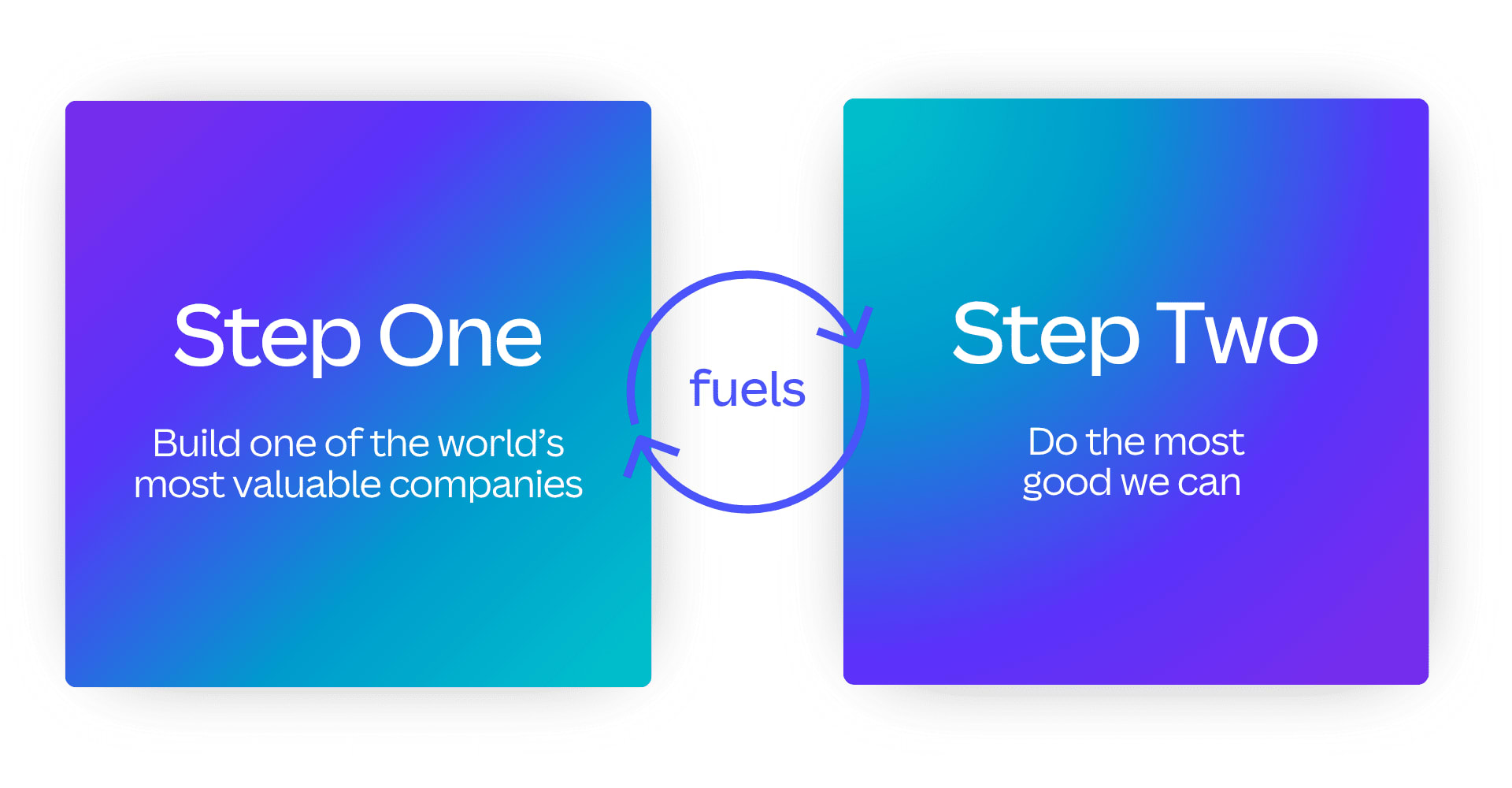
A little bit of context: since starting Canva, we’ve been guided by a ‘simple’ yet ambitious Two-Step Plan. Step One is to build one of the world’s most valuable companies. Step Two is to do the most good we can. With more than 30% of Canva’s value (shares) committed to doing good in the world, this vision has shaped everything we do, from the products we create to the kind of company we’ve strived to be.
At a current valuation of about USD 26 billion, this would be around USD 8 billion in shares committed to doing good.
Other Engagement
From what I can see, their other engagement so far is less likely to be counted towards common EA cause areas:

Mo Putera @ 2025-10-23T03:19 (+35)
Thanks for sharing, really energising to see. Their blog post has really nice illustrations, sharing some of them below.
These are some of the results from the $50M they've donated so far to GiveDirectly to every adult in the Khongoni subdistrict of Malawi:
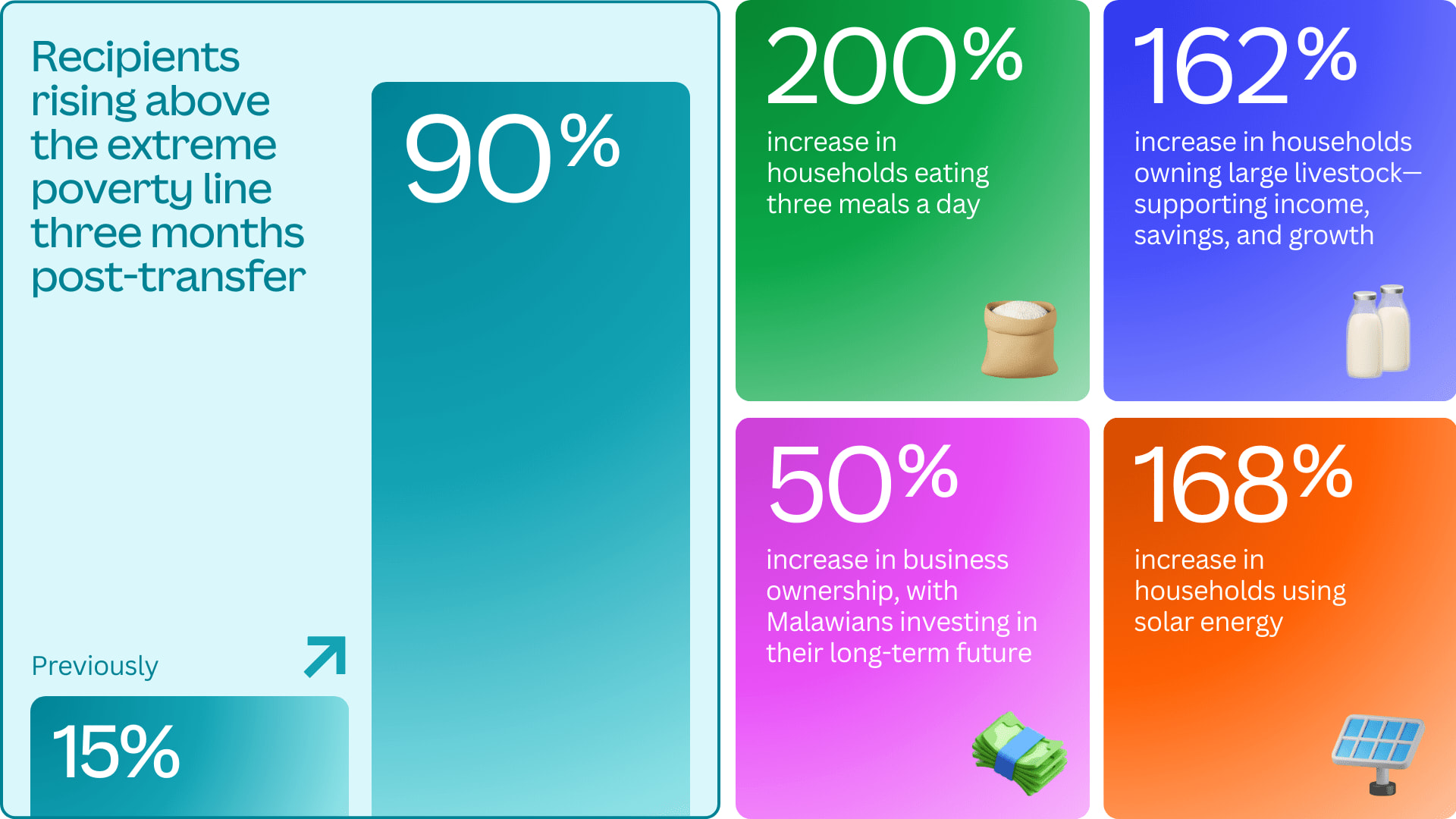
This was what they spent it on:
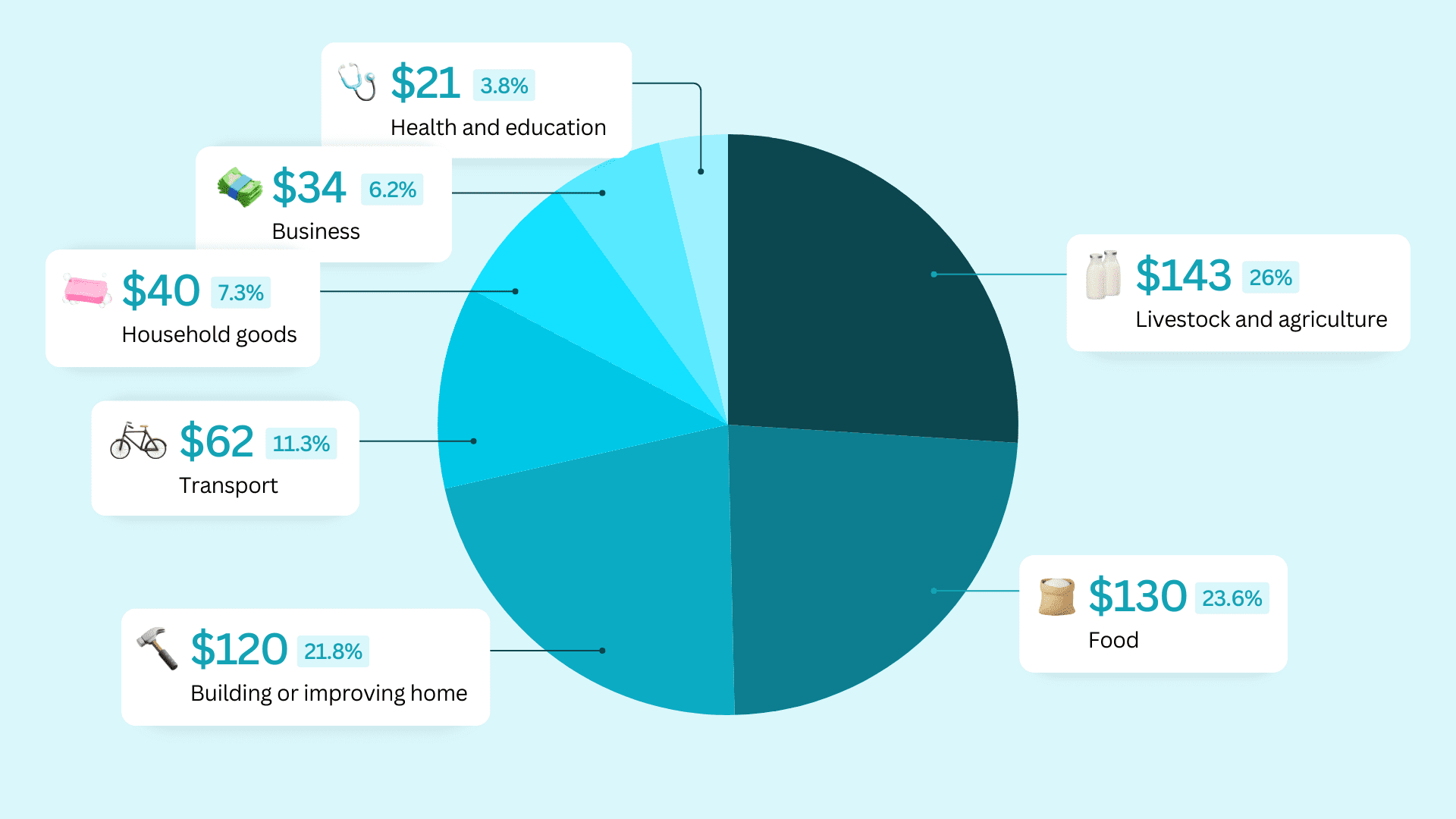
This is the framework Canva came up with to track impact on recipients via continuous surveys:
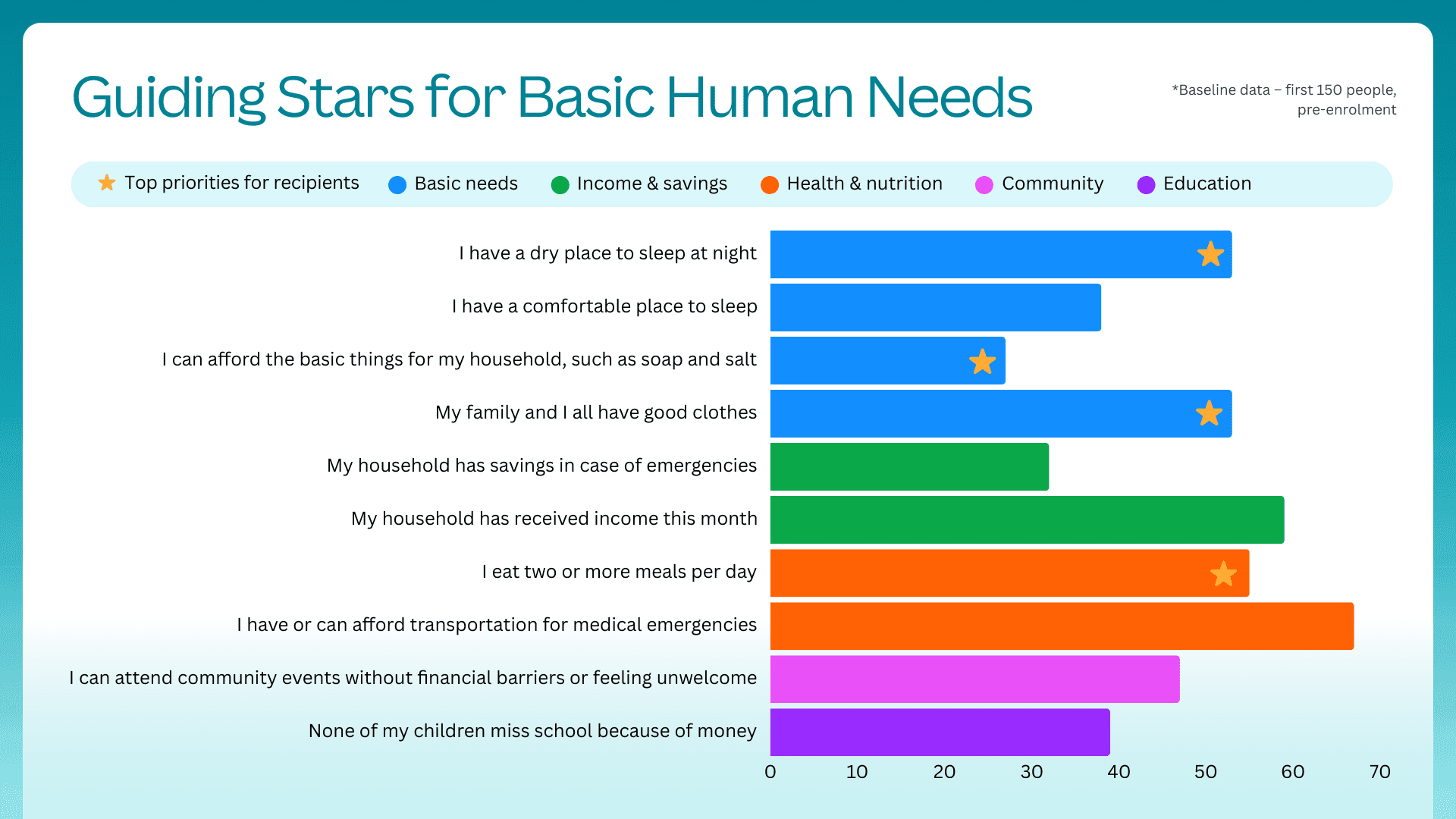
In the next phase with their $100M commitment to GiveDirectly, these are some of the research questions they're helping GD explore:
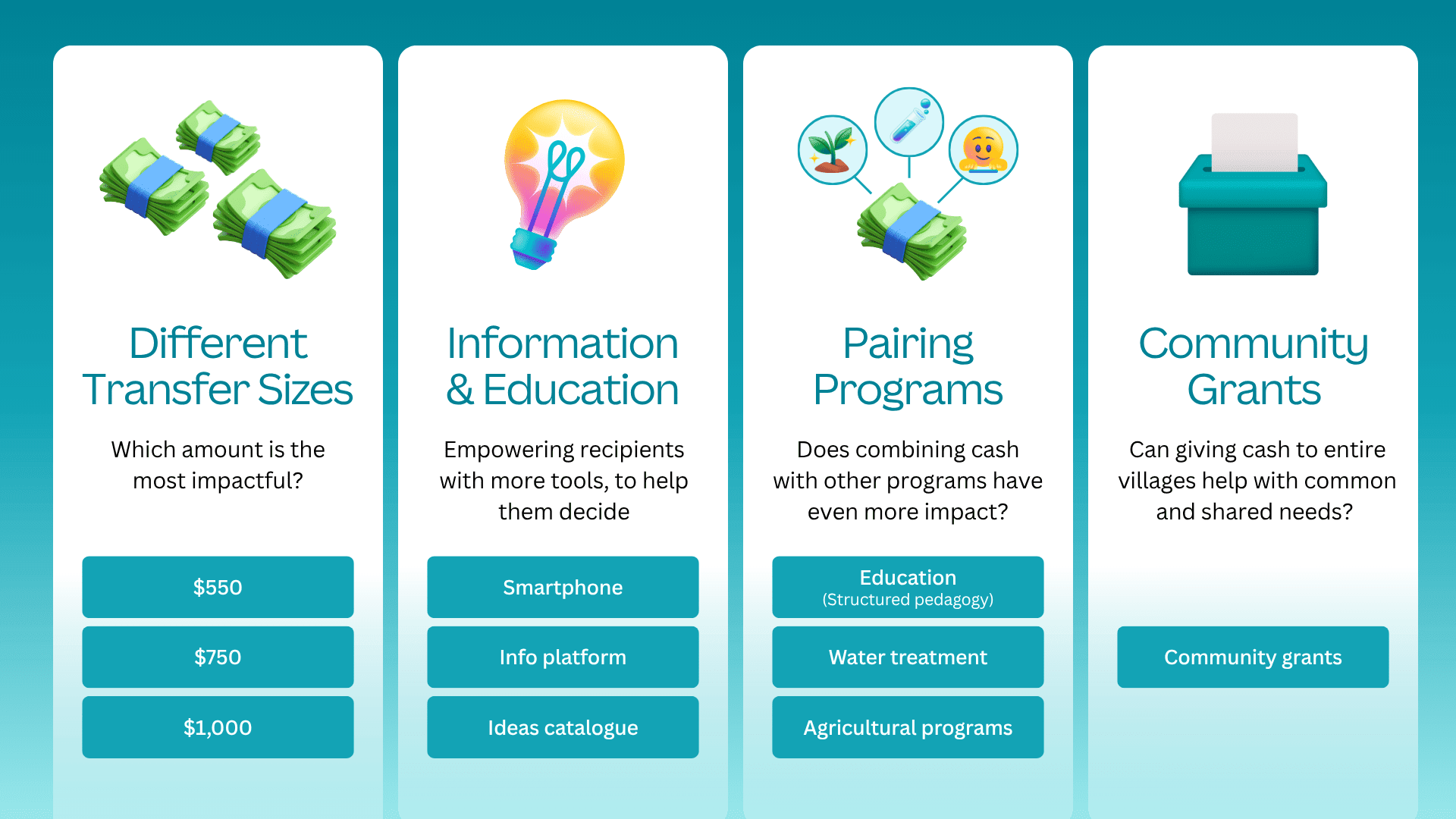
And from GiveDirectly's side of the story — the first 2 phases were funded entirely by Canva:
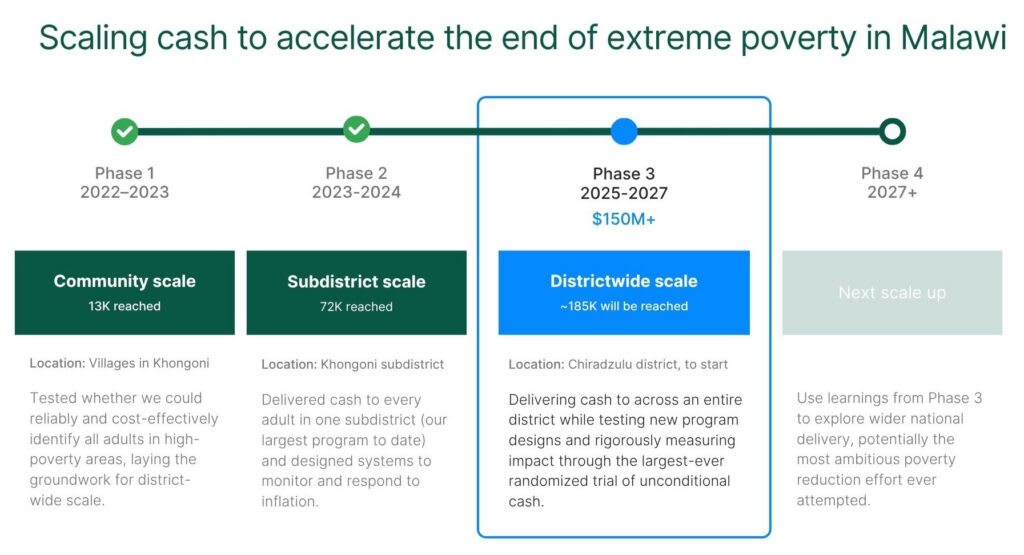
Despite doubling Khongoni's local GDP, inflation was negligible; quoting GD:
Markets were able to absorb large-scale transfers without driving significant price inflation. That gives us strong evidence that this model can be scaled responsibly and rapidly without triggering harmful inflation.
This stability was a product of how recipients and markets responded:
- 🗓️ Recipients didn’t spend all at once: Findings showed households did not spend all of the transfer immediately and gradually increased their spending over months.
- 🚲 They also shopped around: Recipients had access to multiple markets, locally and in nearby Lilongwe city, allowing them to choose between sellers if someone didn’t have what they needed or tried to raise prices.
- 🤝 Vendors chose not to raise prices: Traders reported keeping prices steady to maintain trust, saying opportunistic hikes would damage their reputation once the cash was gone.
- 📦 Markets adapted to demand: Many vendors simply ordered more stock and new traders entered markets, both without significantly driving up prices.
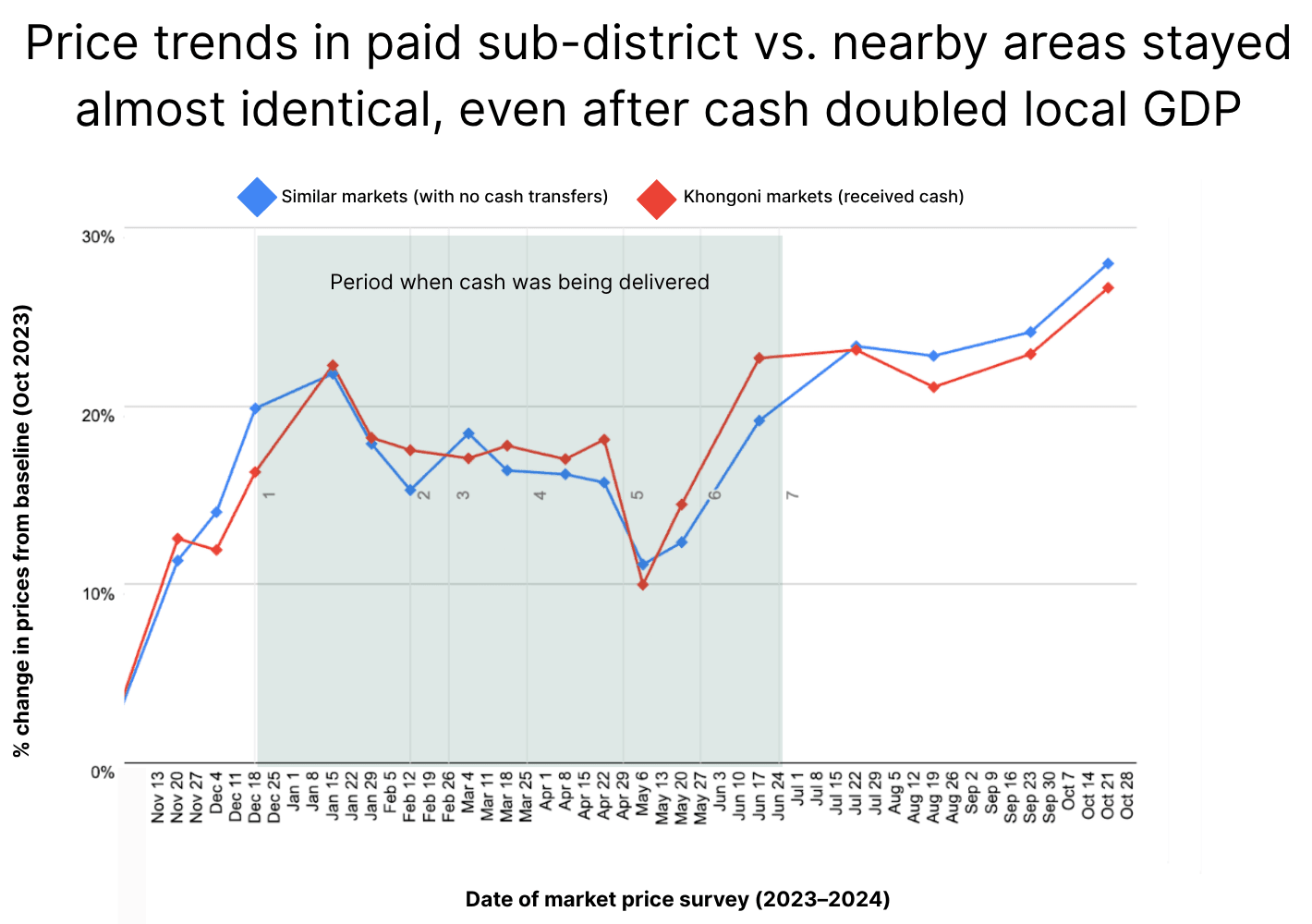
I'm a fan of cash transfers and think it's a tad underrated in EA circles, so I'll end by quoting Canva on cash:
In over 500 randomised controlled trials, direct cash transfers have significantly improved lives:
- Child mortality dropped by 48%, and infant mortality dropped by 57% (Walker et al.,2025) .
- Incomes more than doubled (McIntosh et al., 2023)
- School enrolment rose by 23% (Baird et al., 2014)
- Domestic violence dropped by 3% (Haushofer et al., 2019)
- Illness dropped by 27% (Pega et al., 2017)
- Wellbeing and mental health significantly improved (Zimmerman et al., 2021)
- Economic activity increased by $2.50 for every $1.00 transferred in rural Kenya (Egger et al., 2022)
You might be wondering why cash transfers are able to have an impact in so many different areas. We believe the impact lies in giving people the autonomy to choose what they need most. In all the examples we’ve seen, each person put the money towards ensuring they and their families were able to access their most basic needs while also putting the money to work to generate income in an ongoing manner.
Research shows the cost-effectiveness of cash transfers continues to be elevated upwards to show more impact. Last year, GiveWell reviewed the latest evidence from GiveDirectly and increased their estimates of cost-effectiveness by 3 to 4 times.
Saramago @ 2025-11-07T18:48 (+3)
Very impressive. GD nails the essentials of good comms / messaging while sticking to evidence and transparency. Something many of us aspire to replicate / scale. Well done and looking forward to seeing the impact this unlocks!
Damilola Fasoranti @ 2025-10-23T14:24 (+2)
This is quite an impressive analysis and impact :)
Xavier_ORourke @ 2025-10-23T01:59 (+8)
Love to see it.
The true valuation is probably a lot more than $26b USD - there was recently a secondary sale which valued company at closer to 42 billion. If the company became public, and were to trade at a revenue multiple similar to Figma's (extremely high at like 30x right now) - this would set the company's valuation a lot higher than that
Vincent van der Holst @ 2025-10-24T16:45 (+2)
See updated comment: I stand corrected and I apologise for my mistake. An earlier article I wrote sounded like this was PFG (the way I read it is that they gave away 30% of the stock to a foundation), but this is basically a founders pledge. The 30% might diminish with dilution with new investor rounds.
Still great, but not exactly what we called PFG when we envisioned it, and next time I will read more carefully.
Old comment:
@Marcus Abramovitch 🔸 how do we reconcile this profit for good success (8 billion estimated future value to effective charities) with criticism on profit for good being an inefficient way to fund charities?
I expect 99% of Canva users and most of its employees to choose Canva because of price/quality and pay, but even then there's a small and compounding upside to adopting this model over a Canva with no charity beneficiaries?
Marcus Abramovitch 🔸 @ 2025-10-25T04:17 (+18)
In what way is Canva a PfG company? They've had 7 (depending on how you count, up to 19) funding rounds from traditional venture capital firms. Equity is entirely ownership by private individuals, not charities.
Vincent van der Holst @ 2025-10-26T20:16 (+10)
I stand corrected and I apologise for my mistake. An earlier article I wrote sounded like this was PFG (the way I read it is that they gave away 30% of the stock to a foundation), but this is basically a founders pledge. The 30% might diminish with dilution with new investor rounds.
Still great, but not exactly what we called PFG when we envisioned it, and next time I will read more carefully.
Marcus Abramovitch 🔸 @ 2025-10-27T16:47 (+1)
Thanks for not deleting the comment. Apology accepted, all good.
Jason @ 2025-10-26T17:14 (+2)
Canva strikes me as something other than "classic" Profit for Good (at least as I've understood it). That understanding has involved the vast majority of profits / enterprise value being devoted to charitable purposes, which in turn makes it nearly impossible to secure sufficient traditional venture capital interest. Canva has been able to attract plenty of VC interest, so doesn't strike me as very relevant to the "classic" model as I understand it.
Moreover, from a glance at its homepage, it doesn't seem to me that Canva is marketing heavily on its charitable pledge. (From a consumer perspective, I haven't been aware of Bosch doing so either, despite owning one of their dishwashers). So I don't have an update here on the extent to which advertising a corporation's very strong charitable commitment would radically affect consumer choice.
Henry Stanley 🔸 @ 2025-10-26T18:06 (+2)
Indeed; seems more like founding to give.